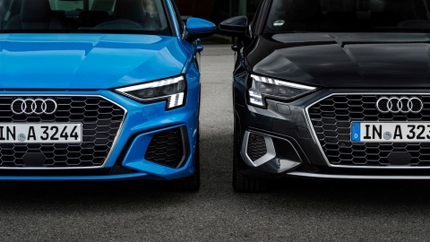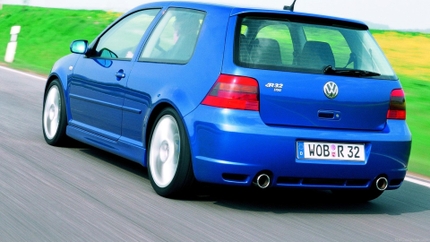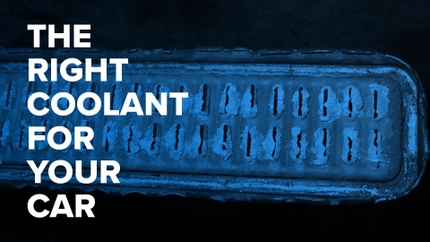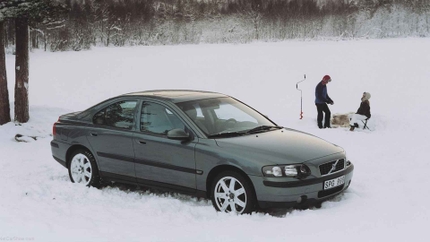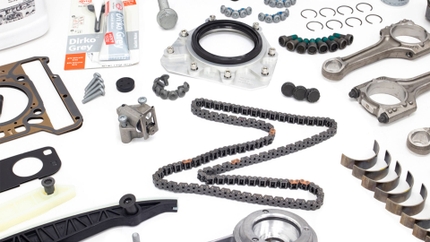If Volvo were to be known for one thing, it would be its safety innovations. Not to take away from the rally and touring car heritage, the fantastic ad campaigns, or their overall quirky way of building cars, but their safety innovations have redefined and revolutionized the automotive landscape on multiple occasions. Sometime in the nineties, Volvo changed direction and introduced its transverse engine layout for improved frontal crash safety. Along with the radical architecture change came the adoption of all-wheel-drive for the best possible traction in poor weather conditions.
Since its introduction, Volvo has gone through more than a handful of revised AWD systems with distinct characteristics and design changes. For most of that time, Volvo used the Haldex Traction designed system to retain the transverse engine layout and include an efficient AWD layout. That system in itself has gone through five different generations and makes up the core of Volvo’s AWD experience. GKN designed the other two systems that bookend the seven variations.
Volvo AWD Gen 1 - Pre-Haldex - GKN Viscous Coupler
The earliest of Volvo’s AWD systems used a viscous coupling between the rear differential and the drive shaft to connect the axles. Designed by GKN, the viscous coupling setup was simple and effective for the time being, making it easy to fit into a pre-engineered chassis and a low-risk option. According to Volvo, the standard power split between the front and rear wheels was 90/10 respectively. This was a reactive system that mechanically engaged when there was a large difference in rotational forces between the front and rear wheels. In other words, when the front wheels slipped, the coupling activated itself, and drive power was sent to the rear in a 50/50 split.
A mechanical coupling that engages automatically, you say? Why yes, I do say, and the reason behind it is truly very simple, although some abnormal words are needed to describe it. Two sets of rotating friction plates spinning in the same direction sit inside the VC unit. Surrounding the plates in the VC unit is a silicone-based dilatant fluid. A dilatant fluid is a non-Newtonian fluid whose viscosity thickens as it undergoes shearing forces. Too dense? Think of the cornstarch and water mixture commonly known as oobleck—it looks like a fluid but thickens to the point of near solidification if anything is moved too quickly through it. While obviously made from different materials, the viscous fluid inside reacted in relatively the same way.

The two plate sets inside the VC unit were each connected to an individual rotating component in the driveline; one set rotated with the drive shaft/front wheels, while the other rotated with the rear wheels. It’s the forces from the fluid that transfer the drive from the drive shaft into the rear differential and through the rear wheels. Under normal operating conditions, the plate sets rotate at the same speed causing the fluid to exert little force on the plates. However, when the front wheels begin to slip in poor conditions, their plate set in the VC unit begins to spin quicker than the other set, causing shear forces in the fluid. Those forces then cause the fluid rapidly increase its viscosity which then forces the plate sets together, locking the drive between the front and rear wheels and splitting the power evenly between them.
It was a very simple way of delivering an AWD system into a Volvo, but it wasn’t faultless. Their operation was effective when fresh, but their surrounding components aged poorly, and due to several possible failure points, many are driven as front-wheel-drive models now. It was also hardly an AWD system with true all-wheel power activated only in the worst conditions after slippage had already occurred. Regardless, the GKN viscous coupler got Volvo into the AWD platform and set the stage for adopting the Haldex design.
GKN Viscous Coupler Models:
- 1998-2002 V70
- 1998-2002 V70XC
- 1999-2000 S70
Volvo AWD Gen 2 - Haldex 1
The GKN viscous coupling worked in a pinch, but Volvo engineers were left wanting a better system. That wanting led them to adopt the Haldex-designed all-wheel-drive, allowing Volvo to keep their drivetrain layout nearly identical to what it was before but with a much-improved torque transfer system. Instead of relying on a viscous coupler to lock up the drivetrain, the Haldex system used a series of wet clutch packs attached to the bevel gear and the drive shaft. The bevel gear, also part of the GKN AWD, is the component that takes the forward/rearward rotation of the front axles and flips it 90° so that the driving force can be transferred through the drive shaft and to the rear wheels. Also known as the angle gear, it’s mounted to the back of the transmission.
Now, imagine the viscous coupling, but instead of a dilatant fluid, the lock-up is performed hydraulically—that’s the Haldex unit, or AOC (Active On-demand Coupling). It sat between the drive shaft and rear differential, similarly to the viscous coupling. When the clutch pack directly connected to the bevel gear began to rotate quicker than the pack connected to the rear wheels, the mechanical differential pump attached to the Haldex housing was spun and built up hydraulic pressure. Through the use of several mechanical valves, the Haldex system used that pressure to lock up the clutch plates and spilt the torque evenly front to rear.
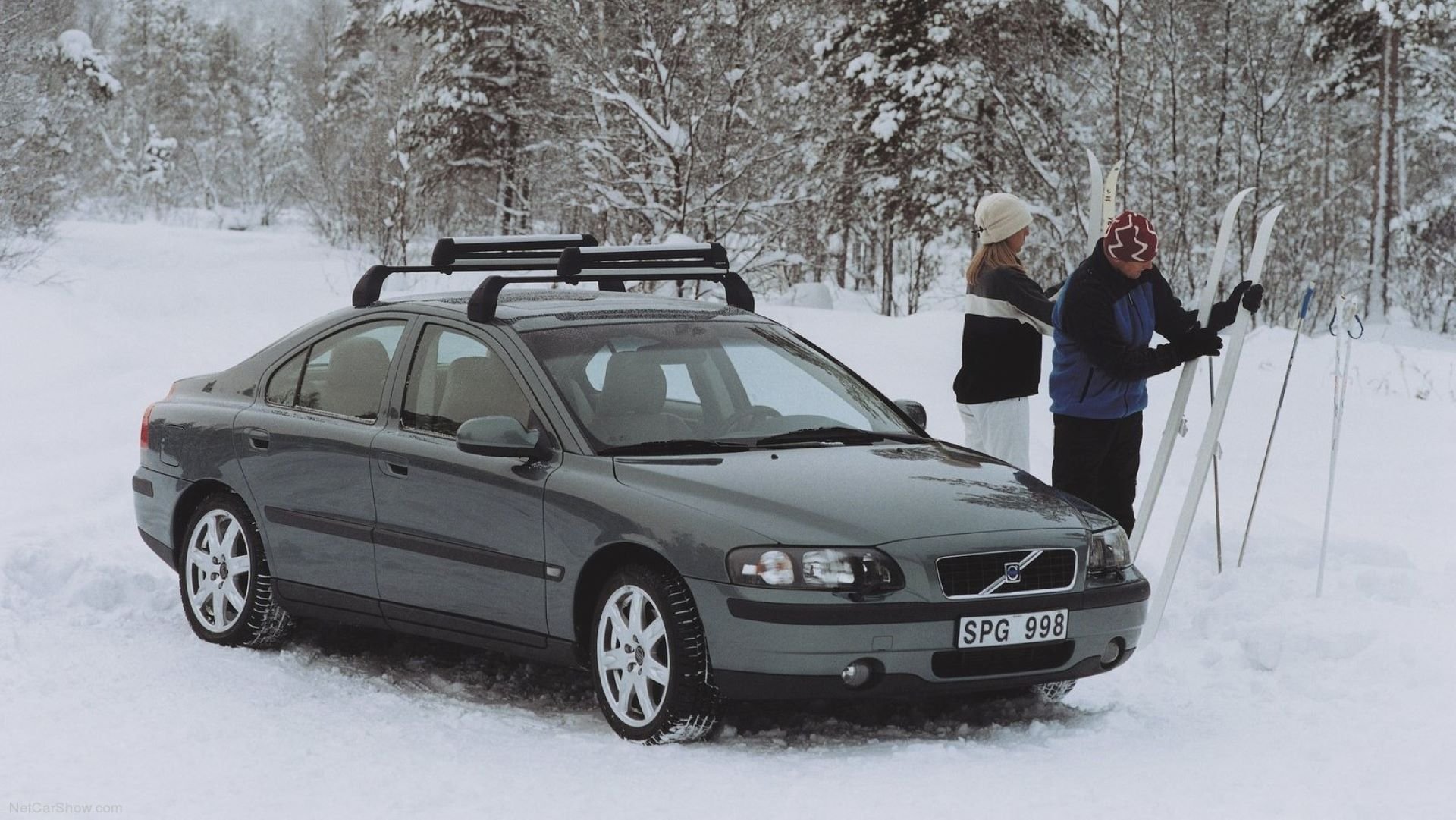
Like the earlier GKN system, the first generation Haldex AWD was a reactive system with a regular torque split of 90/10 and a locked split of 50/50. Though the way in which the plates became locked was different, the earliest Haldex systems essentially were a more complex and serviceable version GKN coupler. Both operations happened after slip had occurred and both without the use of electric controls. However, that would change for the next generation.
Haldex Gen 1 Models:
- 2002 S60 AWD
Volvo AWD Gen 3 - Haldex 2
The second generation Haldex design was changed fairly radically, ditching mechanical control for electricity. The linear throttle valve used to activate the clutches was shelved for a series of computer-controlled solenoids. The inclusion of the solenoids and the Differential Electronic Module control unit made the system more complex, but traction was greatly improved over the early system. Also part of the new system was a pressure sensor that allowed the system to adjust itself based on the information it was receiving from the various sensors connected to the DEM.

Comparing the first and second-generation units would make the untrained person think they were two completely different pieces of equipment rather than pre and post-revision. Previously included parts of the AOC were made part of the rear differential to shrink and simplify the unit. None of those changes affected operation, though. The operational changes were limited to the revisions mentioned above.
Haldex Gen 2 Models:
- 2003-2005 S60
- 2003-2005 V70
- 2003-2005 XC70
- 2004-2005 S80 (5-cylinder only)
- 2003-2004 XC90
Volvo AWD Gen 4 - Haldex 3
The 2004 introduction of the third-generation Haldex unit was a game changer for the AWD system. All previous iterations were a reactive system, meaning that AWD capabilities were only available after the front wheels had begun to slip. The new third generation introduced a check valve between the small electric feeder pump and the solenoids. Once a vehicle with that system was started, the electric pump would pre-pressurize the system for an instant torque transfer when the DEM called for it. Haldex referred to the new operation as the “PreX” solution. Its ability to snap to 50/50 AWD on demand took the Haldex from a reactive to a proactive system. Every Haldex generation used a similar operation from here on that Volvo called “Instant Traction.”

During production, the feeder pump was enlarged to meet the system's demands better. Regardless of size, once the initial pressure provided by the pump was exhausted, the mechanical differential pump continued to supply the necessary pressure. The larger electric pump was a sign of the future, though, as the outdated mechanical pump was heavy and becoming unnecessary.
Haldex Gen 3 Models:
- 2005-2008 XC90
- 2006-2009 S60
- 2006-2009 V70
- 2006-2009 XC70
- 2006-2009 S80
Volvo AWD Gen 5 - Haldex 4
2007’s introduction of the fourth-generation Haldex system saw another big shift in the way the system operated. The specially designed mechanical differential pump used since the Haldex’s introduction was removed in favor of full-electric pump control. Because the mechanical pump offered up the exact amount of pressure needed based on the speed differential of the clutch packs, the proportional throttle valve was removed for a proportional pressure-reducing valve. The revised hydraulic routing and lack of a mechanical pump also necessitated the inclusion of a hydraulic accumulator. The feeder pump fed the accumulator at all times to ensure a quick lock-up when needed.
It was during this era that Haldex began the sale of its Traction division to Borg Warner. The American company had been involved with Haldex for some time and, in early 2011, finalized a deal to acquire Haldex Traction Systems from the Swedes. The following Haldex AWD fifth generation was a product of Borg Warner.
Haldex Gen 4 Models:
- 2009-2014 XC90
- 2009-2012 XC70
- 2009-2012 S80
- 2010-2012 XC60
- 2011-2012 S60
Volvo AWD Gen 6 - Haldex 5
The Haldex design had almost 15 years of development by the time Borg Warner introduced the fifth generation in 2012, and it looked nothing like the previous generations. The new generation wasn’t introduced to improve traction or response times but rather to simplify the AOC by eliminating components. The introduction of the Centrifugal Electro-Hydraulic Actuator drove the simplification process. Inside the actuator is a pump and overflow valve in one unit, which allowed BW to remove the accumulator, solenoids, and fluid filter. It pulled the hydraulic fluid from the sump and used its internal overflow valve to ensure the proper amount of pressure was fed to the clutch packs. Once pressure needed to be bled off from the clutch packs, the fluid was routed through a pressure relief valve. Complete control of the system was handled by the DEM and the reading it received from the various sensors attached to it, like throttle position, wheel speed, and steering angle.

Even though the new system worked well, Volvo continued to weigh its AWD options. The near future showed a move away from internal combustion engines to plug-in hybrid and fully electric drivetrains, neither of which would utilize the Haldex-designed AWD system.
Haldex Gen 4 Models:
- 2013-2018 S60
- 2013-2015 S80
- 2015-2018 V60
- 2013-2017 XC60
- 2013-2016 XC70
Volvo AWD Gen 7 - GKN ActiveConnect
Nearly two decades after GKN Automotive was first tapped to deliver Volvo’s AWD system, the Swedes again tapped the British engineering firm for a new drivetrain solution. The solution they received was very similar to the one fitted to the Range Rover Evoque in 2014, which GKN refers to as ActiveConnect. GKN’s revised approach used several new components but critically, the “power transfer unit” and the “rear drive unit.”

The power transfer unit, or PTU, is bolted to the back of the gearbox and acts just as the angle did in the previous AWD systems. However, the PTU is far more complex, acting as the driveline disconnect between FWD and AWD conditions. In other words, the PTU only activates the AWD capabilities when its control unit deems it necessary. The rest of the time, the PTU disconnected the drive shaft and rear differential from the engine’s torque for improved fuel economy. When AWD is needed, the PTU engages the drive shaft and rear differential in less than half a second.
GKN offers at least three different rear differential units that work together with the PTU to form an on-demand AWD system. However, little information exists regarding which units are used in which models and trim. FCP Euro has reached out to GKN Automotive for some insight, but it has been all quiet on the home front so far. If you have any definitive proof as to which RDUs are used in the SPA-chassis Volvos, then please let us know in the comment below!
GKN ActiveConnect Models:
- 2016-Present XC90
- 2017-Present V90
- 2019-Present V60
- 2017-Present XC60


